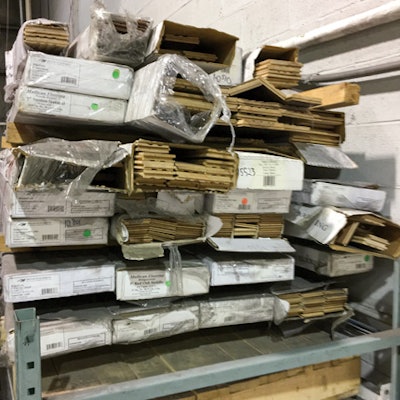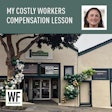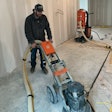
Many pros in our industry get into the business because they love working with their hands, not because they are interested or trained on the details of running a business. As part of my job, I use sections of our company's Management Training Program to help our customers with the Business 101 aspects of running a company. The fundamentals in this article can be helpful whether you are just getting started, are sharing information with a new employee, or just want to brush up on some basics yourself. These fundamentals are the same whether you operate a small flooring business or are part of a worldwide corporation. Here is the basic premise of what I teach: Run a S.M.A.R.T. operation. That's Sales, Margin, Accounts Receivable, and inventory Turnover.
Sales: the lifeblood of any business
Sales can be thought of as volume: How much are you selling? It is a benchmark of growth, and it's essential to try to accurately project sales so you can determine all the things you need to continue to generate sales month-to-month or when planning for a new year.
It is said in business: "Price, quality, customer service ... pick two!" It is difficult to provide all three since consumers are always demanding you cut something out somewhere. You have to find the balance that works for your business model and your bottom line. Remember, getting sales is one thing. Actually making a profit is another! Which brings us to ...
Margin (not "markup")
Your margin brings meaning to sales, because without the proper margin, sales mean nothing. Anyone can "sell" at no profit. You are in business to make a fair and deserved profit. Profit is what keeps our economy healthy, our employees cared for, and our children clothed, fed and educated. Be proud to make a profit, or you operate at your own risk!
If you do not know the difference between "margin" and "markup," I will sum it up here:
Markup is the percentage a cost is increased ("marked up") when you sell it.
Our example: Say I sell a floor that costs $3/square foot, and I want to mark it up 25 percent. That's my cost plus 25 percent.
Calculation: $3 x 1.25 = $3.75.
So, you make $0.75 per square foot.
Margin, or GPM (Gross Profit Margin), is the percentage of a price that is profit.
Our example: On that same floor that costs $3/square foot, I want a GPM of 25 percent. I start with 1 - .25 = .75. This is your divisor. Think of it like a dollar: Take away .25, you leave .75.
Calculation: $3 / .75 = $4/square foot.
You make $1! Markup leaves profit on the table and doesn't properly represent your actual profitability. As popular as it is, it is old-school, and GPM is the most efficient and commonly used calculation in business today.
RELATED: Techniques to Improve Profit Margins
A/R: Collect what is owed
Of course you need accounts receivable so you can pay your bills and expenses, and especially payroll! If you run a profitable business and collections get slow, you may lose the confidence of your vendors and even your employees, and that can destroy any business. If you have built something profitable, it doesn't hurt to work with a local lending institution on a line of credit so when collections get a little slow, you can draw from that resource. Also, be aware that distributors and other vendors will jump through hoops and even sometimes offer reduced pricing and discounts to good-paying customers.
When collecting becomes unreasonable, have a collections company and professional legal advice ready to roll. First, be sure you are always using a proper contract for all work and applicable change orders. When customers fail to pay in a timely manner, you can often apply a mechanics lien on the property. The laws for liens vary from state to state, so make sure you know the details of the laws for your location regarding when and why you are able to file a lien.
When collecting money, remember, you get more flies with honey. Be as polite as possible, but if you are owed money, go after it! I once had a contractor customer burn me for over $3,000. It happened to be in a subdivision where I found out that one Realtor had six signs on site. I called her politely and explained I would be placing a lien on Lot B, Unit 6, and that I had no alternative. Within minutes, my contractor customer called me with a credit card and paid in full. That poor Realtor wasn't going to hold up her income and all her hard work because some flooring contractor decided to stiff us. He knew he would lose every other house in the subdivision. Be creative, but be a pit bull ... and get paid!
Turnover: Old inventory hurts you
We usually consider inventory an asset, but if no one wants the product, it can be a liability. If you have old inventory sitting around, it is better to sell at a loss or donate it, because many lending institutions will deduct obsolete inventory from what you can borrow. And, by the way, lending institutions will also deduct the amount you can borrow because of your past-due A/R! If you have aged receivables, bills to pay and old inventory, it will be held against you!
Here's an example: You have a $200,000 line of credit, and your A/R, obsolete inventory and debt adds up to $75,000, so the limit you can borrow is $125,000. What if you got a hot deal on flooring and need $129,000? You're out of luck. I used to be in retail—trust me, never fall in love with your inventory! Move it out!
Success, judgment & experience
Of course, we could get much more in depth on each of these topics, but I wanted to touch on some basic building blocks that create a sturdy foundation for a well-built, profitable company. It has been said, "Success is the result of good judgment. Good judgment is the result of experience. Experience is often the result of poor judgment!" You gotta break some eggs to make an omelet, baby. We all have successes and mistakes we can share from our time in the trenches; feel free to leave your stories and most helpful business management advice in the comments of the online version of this article. And remember, run SMART!































